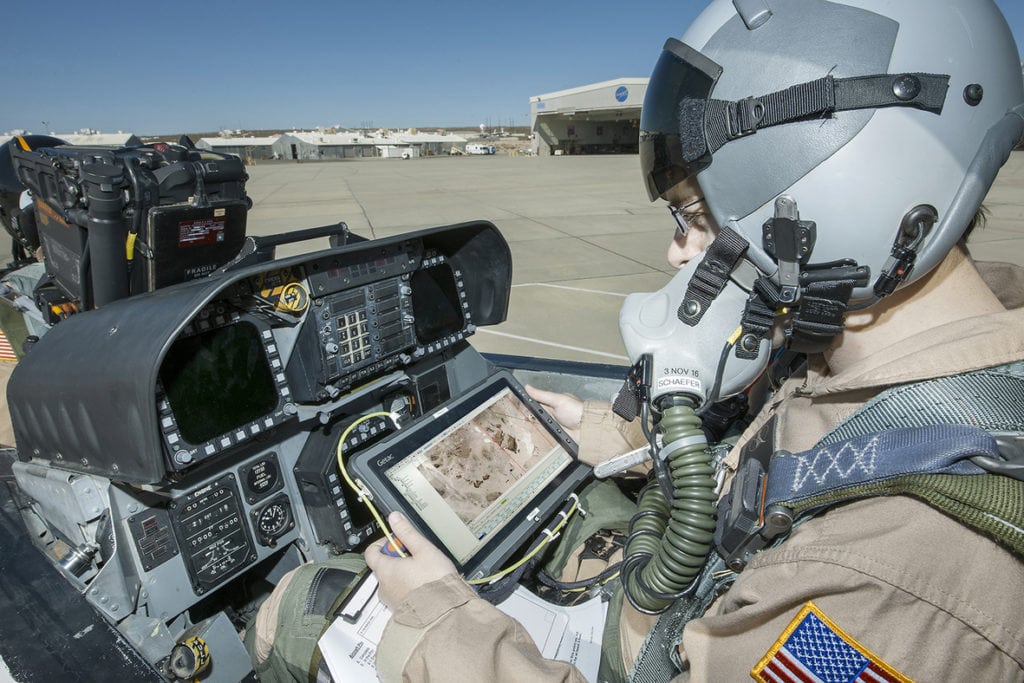
Flight Test Engineer Jacob Schaefer inspects the Cockpit Interactive Sonic Boom Display Avionics, or CISBoomDA, from the cockpit of his F-18 at NASA’s Armstrong Flight Research Center in Edwards, California. Photo by Ken Ulbrich, courtesy of NASA
NASA’s and Honeywell’s two-year test with supersonic jets has been completed, Honeywell said at the Paris Air Show. The test program successfully integrated predictive software and display technology into business jet cockpits.
The goal of the two-year test was to determine the most effective way to show pilots flying supersonic jets where people on the ground may hear sonic booms, Honeywell said. This could potentially help break down a barrier to general adoption and acceptance of supersonic flight. The test demonstrated how pilots could see where sonic booms would affect those on the ground and how those people would be affected.
“We are pleased to complete this important milestone of the pilot interface testing in civilian airspace with Honeywell,” said Brett Pauer, commercial supersonic technology subproject manager of Overland Supersonic Flight at NASA. “This technology could prove to be useful for NASA’s future planned low boom flight demonstration experimental airplane. This plane is being designed to gather community noise response data that may help remove the regulatory speed restriction to overland commercial supersonic flight.”
Sonic booms are loud noises caused by aircraft traveling faster than the speed of sound. Although supersonic flights could, according to Honeywell, cut business jet travel times by 50%, noise is one of the primary barriers. The test allowed Honeywell and NASA to integrate NASA avionics software with Honeywell’s interactive navigation technology and put it into a modern business jet avionics suite. The technology enables pilots to predict sonic booms over the future planned flight path. This way, pilots can avoid sonic booms over largely-populated areas.
“With predictive technology and knowledge, pilots can change course and minimize the boom over populated areas,” said Bob Witwer, VP of advanced technology at Honeywell Aerospace. “Honeywell and NASA have developed this unique predictive display for civil aviation that has been tested in commercial airspace, bringing the vision of the return of commercial supersonic flight closer to reality.”